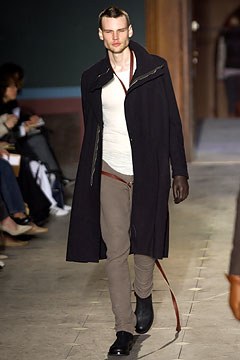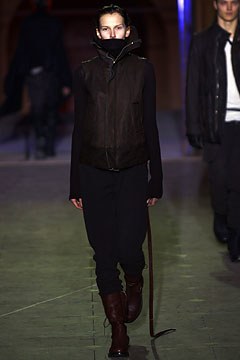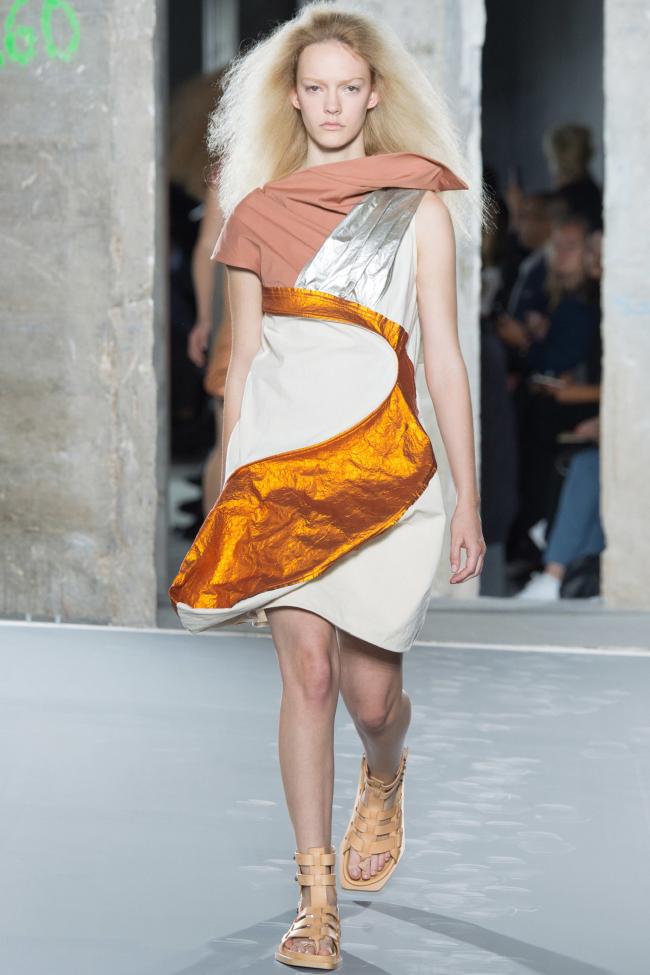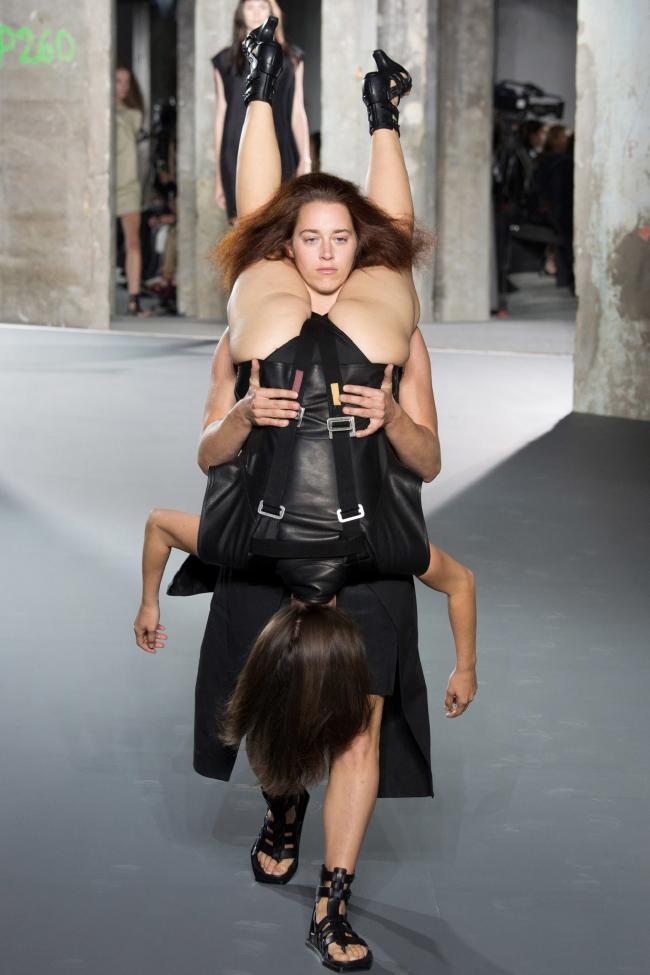Fashion Industry Broadcast and Style Planet TV is proud to present its new 11-part, hour long Film docuseries “Renegades”. As a teaser before the 11 films are released, we are revealing a post on THE BROADCAST each week for the next 11 weeks. This week the story is on Hedi Slimane.
Our Renegades refused to follow the laws of the ‘fashion rulebook’. The dreamers, the rebels, the auteurs, without whom popular culture would never have been quite as interesting. Even if you hold only the most casual interest in the world of fashion, it’s hard to deny the fascinating life stories of every one of our Renegades.
Featuring the lives and legends of:
- Alexander McQueen
- Yohji Yamamoto
- Rei Kawakubo
- Issey Miyake
- Kenzo Takada
- Malcolm McClaren
- Vivienne Westwood
- Jeremy Scott
- Rick Owens
- Hedi Slimane
We present to you: RICK OWENS

Rick Owens is the unlikely American Fashion Designer; far from the Ralph Lauren’s of the world, whose classic sportswear has come to define the wholesome American dream; Owens’ vision rather, offers an introspective insight into the darker elements of nature and of man and it is often thought, into Owens himself.
To the rest of the world Owens strikes a mysterious figure, a slender – softly spoken Californian native; an intellectual no doubt, with working ties to some of the most esteemed models in the world and yet no one embodies the aesthetic of Rick Owens more than the man himself. His trademark long locks and a self-perpetuating uniform of black, monotones and shades of Grey, cloaked over white sneakers often draws critical comparisons to that ominous figure of the death: The Grim Reaper.
This comes as no surprise to the New York times, with its own Alexander Fury observing that Owens is like “a prophet of the apocalypse” quoting mostly “on topics such as death, renewal (and) creation”. And yet he is generally considered to be fair, considerate and pushing sentiments that promote positivity and acceptance in his dealings outside of the catwalk.
But beyond the presence we see backstage, it is the unique techniques and deft craftsmanship that have come to define Rick Owens and for that matter the many designers within his field of influence. Best known for his brand of “glunge” a combination of grunge and glamour that offers casual otherworldly elegance, Owens is a man with more than a few tricks up his leather sleeve.
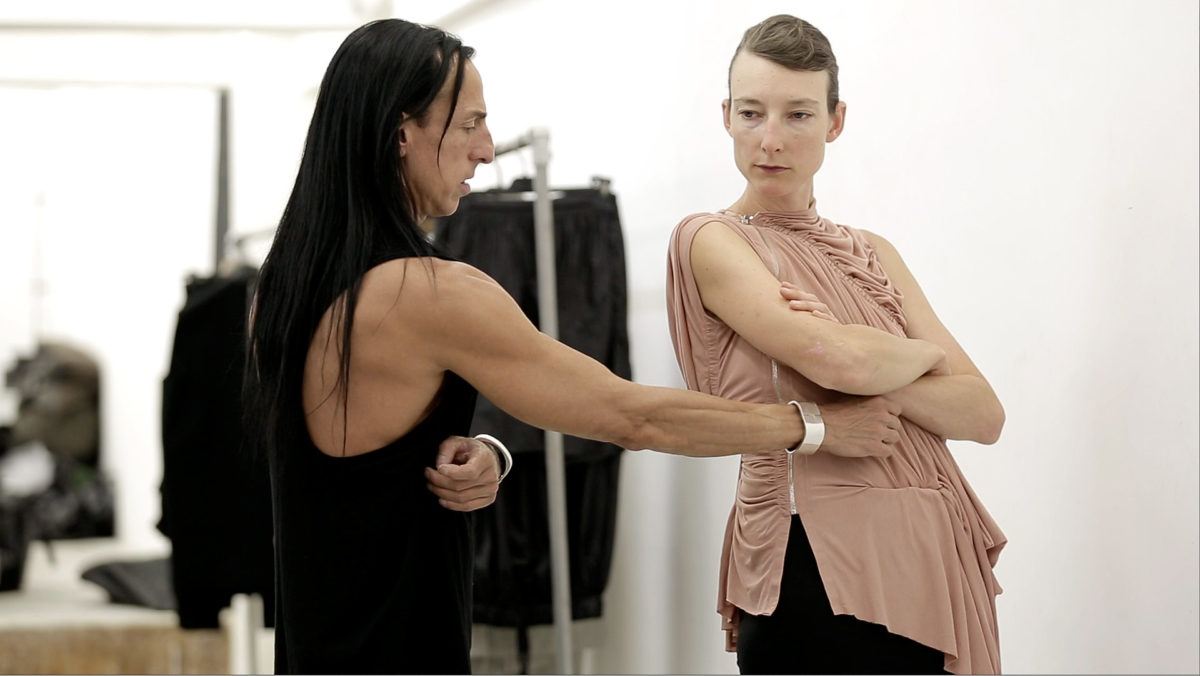
He is a prolific designer, producing collections seasonally for his main and diffusion lines for men and women bending the gender lines with his own brand of controversy. But it is his distressed materials and asymmetric leather jackets worn by the likes of Kate Moss that have catapulted him to the halls of fashion royalty.
Looking over past collections, it is clear the designer masks an inherent complexity in each of his clean-cut creations. There is deception in the simplicity of his design: an intricacy arising from both his dedication to pattern cutting and a rare selection of arduous working materials, resulting in a unique drape over the human body that few designers can replicate.
Born in 1962, Richard Saturnino Owens or Rick Owens has he has come to be known, grew up in Porterville California. The only son to John And “Connie” Owens, his father a former social worker and his mother – a school teacher of Mexican descent, raised Owens under a strict Catholic upbringing that went beyond the conventional. Owens relationship with his father was tenuous in the early years. TV was forbidden, and Owen’s external influence was limited to a regime heavy on literature, philosophy and classical music.
It is during this time Owens formed an appreciation for intellectual and cultural pursuits that would later influence his life’s work. In particular his studies on Japanese culture that led him to develop his aesthetic of “broken idealism” stemming from the Japanese appreciation of damaged objects. In Japan, when a piece of pottery is broken; it undergoes the art of repair known as Kintsugi, the act of filling cracks with molten gold to reconstruct the object and in the process make record of it’s history, whilst at the same time transforming it something new; stronger and in possession of a greater beauty.
Owens even took this transformation upon himself undergoing a physical change over the years, dyeing and straightening his hair, trimming his brows and reconstructing his muscle to reflect his aesthetic ideals.
For Owens surviving the small town within a strict conservative family was both isolating and difficult. Despite his entrapment, he managed to find pockets of inspiration. At school, he was drawn to the dramatic aspect of the Catholic church and their “dragging robes”. This penchant for drapery and movement became the foundations of his signature pattern making. His mother too was a gifted seamstress though she takes no credit for her influence. With his parents it was always thus, a dichotomy of discipline and support, of hard conservatism and sweetness that would in turn form the hallmarks of Owen’s own affable character. Against his father’s hope that he would become an architect, Owen’s embarked on a creative path that would soon pluck him from obscurity.
“From there, I rejected all that was considered ‘normal’ and ‘straight’ in the world, and I did everything to change it.”
Owens used his artistic side to release his inner anger against normality and what was considered to be standard in terms of fashion. At eighteen he learned to sew and began to design street clothing to sabotage this uniformity. Even then, his designs were complicated beyond his skills, executing his ideas on pure gut instinct.
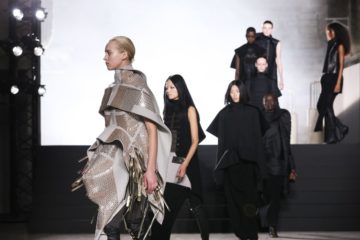
After school, Owens went on to study Fine Arts at the Otis Art Institute in Los Angeles, part of the esteemed Parsons School for Design. For him art was an intellectual pursuit that he was not equipped for, whereas fashion seemed much more accessible and therefore more amenable to his American sensibilities. Owens dropped out to pursue a program in pattern making and drape design at the Los Angeles Trade Technical College. He would find his feet developing costumes and sets on the Hollywood outskirts, whilst working an entry level role for a knock-off production company in LA, deconstructing the latest trends. It was laborious, repetitive work; but it allowed him to hone his trade craft in cutting patterns, a skill set not often seen in modern designers.
He established his label in 1994 and focused early collections on manipulating leather and fabric remnants he had dyed to the monotone colour palette he is now synonymous with. The first collection of garments was sold exclusively to Charles Gallay, whose boutique was one of the most influential avant-garde stores in Los Angeles.

In 1998 Owens came into contact with his life’s muse. Owens describes Michele Lamy, his wife of over a decade, as his accomplice partner, baroque muse, and better half; and the inspiration that has helped him maintain the independence of his label. Owen’s who identifies as a bisexual was dating a man who introduced him to the French born Lamy, whom was also in a committed relationship at the time. Lamy was a formidable exotic older woman, Owens, a broken idealist, together they began an affair that would form the basis of their lifelong partnership in work and in life.
These were experimental times for the designer, not only at work but in his personal life. Owens and Lamy spent most of the 90s succumbed to extreme substance abuse of drugs and alcohol, that together they managed to surmount. For Owens this was a highly influential period of light and dark that reflected his idea of “real life”.
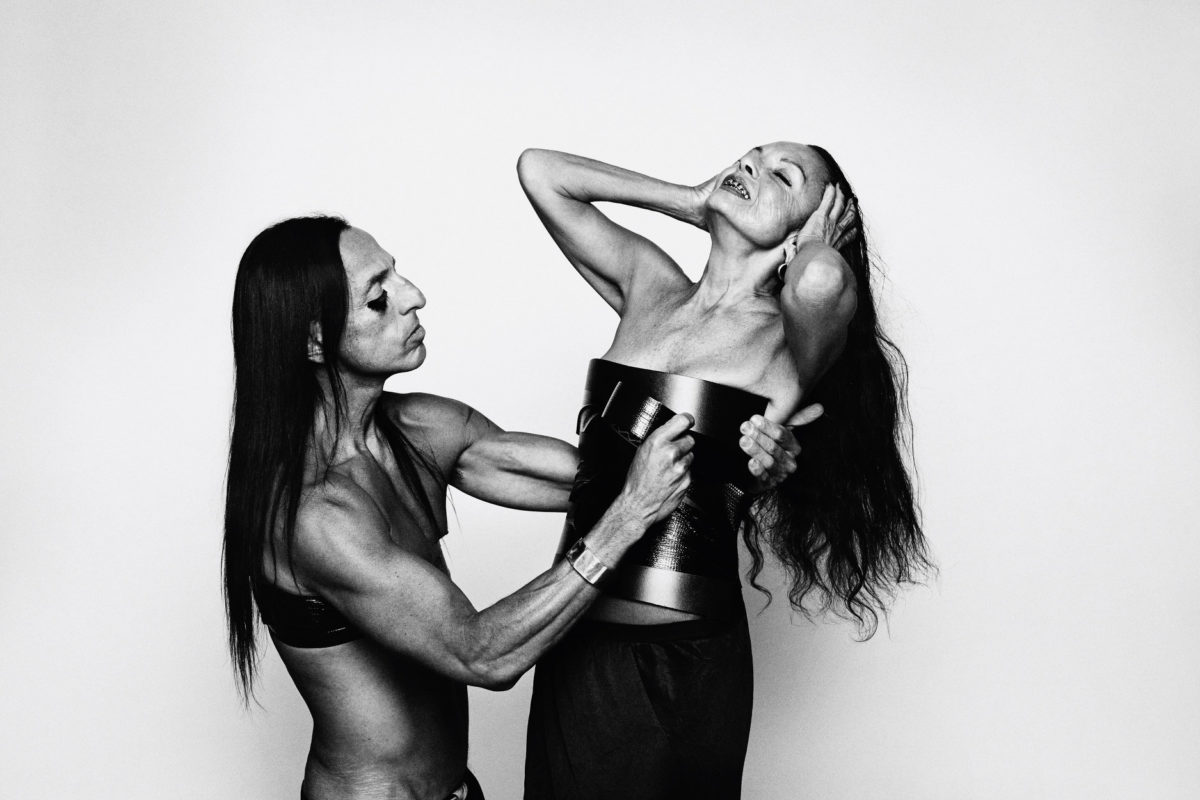
Lamy who was formerly attached to a sportswear company, had moved onto hosting Cafes des Artistes, which became the hot spot for Hollywood talent and Rock Royalty. Dressed in her lover’s designs, Lamy was responsible for exposing Owen’s early work to that scene of affluence and consequently the press. Musician Courtney Love formed one of Owen’s early patrons, purchasing what is considered now as his seminal leather jacket. Love attended his Paris shows and championed him in the Press, noting how the popularity of Owens designs fell to a certain type of crowd “rockers or people willing to take that kind of a chance”.
Owens continued to promote his brand into the late 90s, meeting buyers and stockists in person. With the brand exposure from Gallay and later the Maxfield boutique, his line landed in Barney’s in 1999. It was a sell-out, the then current fashion director of Barney’s Julie Gilhart summed up the frenzy perfectly:
“He doesn’t advertise, he isn’t all over magazines, yet he appeals to a luxury customer. Even though he’s not seen as a luxury brand, he is. He’s the essence of insider exclusivity”.
In 2001, Owens moved his production offshore to cope with his rising growth; signing a deal with an Italian agency. EBA secured Owens a home for his manufacturing as well as stockists in Europe so Owens could avoid selling out. In its 2017 evaluation, Owenscorp group turned over $140 million dollars, making it amongst the most prolific independent labels in the world yet to be devoured by the fashion superpowers of LVMH or the Kering Group.
“I’m independent and I’m proud. This phrase may sound arrogant, but independence contributes to our uniqueness”. Owens works under the assumption of quality over quantity, with the risk of big corporations failing to value the aesthetic freedom that only true independence affords.

A freedom which was celebrated prominently in Vogue 2001. Anna Wintour at the behest of Courtney Love and Sally Singer (Vogue’s then fashion news director), commissioned one of the world’s top photographers Annie Leibovitz, to capture the rising star of Owens. The photo shoot set Owens against punk musician and friend Kembra Pfahler. Owens’ world is one inextricably linked to music, his revolutionary designs have the attitude of the punk rebellion and Leibovitz managed to capture this energy which defines the Rick Owens woman.
Following this, Owens received his big break from the beckoning fashion industry. Vogue and Style.com backed the burgeoning designer by sponsoring his first runway debut in New York and in line with this serendipity, Owens picked up the coveted CFDA Perry Ellis award for emerging talent. It was official; Owens was now hot property in the fashion world and ready to launch Internationally.
A year later, Owens took the designers pilgrimage to Paris where he now permanently resides. Despite learning little of the language, the French remain quite taken with the avant-garde designer, whose work is constantly in print and on the back of well-dressed woman. These days the designer can be found in close proximity to his home and independent atelier both of which are fittingly centred in the former headquarters of the French Socialist Party. The building is outfitted to reflect Owens aesthetic agenda and incidentally is situated opposite the French Parliament. It is ironic that Owens, once pursuant of a career in the arts, felt he had no voice or intellect worthy of its field; since he is one of the few designers to articulate the context and agenda behind his designs and quite literally has aligned himself next to a house of political influence. Perhaps it his way to stay in touch with the zeitgeist as he explores his overarching themes afflicting humanity.
Upon his arrival in 2003, Owens was picked up by the historic Revillon Frères to breathe new life into the fur industry. His modern skew on the material did just that. Suzy Menkes who reviewed one of his collections for the International Herald Tribune stated, “Owens knocked the stuffing and stuffiness out of furs”. In 2006 Owens broke away to launch his own line of furs with Lamy. The Palais Royal boutique opened in a French arcade of the same name.
 By 2008, Owens was a regular staple of the French fashion set, and back in his native US the designer was set to open his first American boutique in downtown Manhattan. His turnover quickly reflected his growing International presence with over 250 high-end stockists worldwide and a cult following propelled by a celebrity clientele as diverse as the formidable Helena Bonham Carter, to the perennially youthful Olsen Twins.
By 2008, Owens was a regular staple of the French fashion set, and back in his native US the designer was set to open his first American boutique in downtown Manhattan. His turnover quickly reflected his growing International presence with over 250 high-end stockists worldwide and a cult following propelled by a celebrity clientele as diverse as the formidable Helena Bonham Carter, to the perennially youthful Olsen Twins.
Though Owens himself prefers to resist the “cult label”, concentrating instead on designs that will surpass mere trends and that will lend gravity to his conceptual pursuits. It is for this reason he injects quality luxury fabrics of cashmere and organza up against leather, eel skin, furs and ostrich feathers that push the boundaries of his drapery and act as a platform for his mix of musical influence, from the goth movement to the classical training of his youth.
Yet his clothes do not exist in a vacuum, they are part of the Rick Owens planet, delivered in the context of one his many controversial fashion shows. His obsession with evolution not only underlined many of his collections but inadvertently was biographic of the brand’s own transformation. In his own words “I always think the act of creation is your fight for immortality… the energy of resisting death and trying to be remembered in the best possible way”.
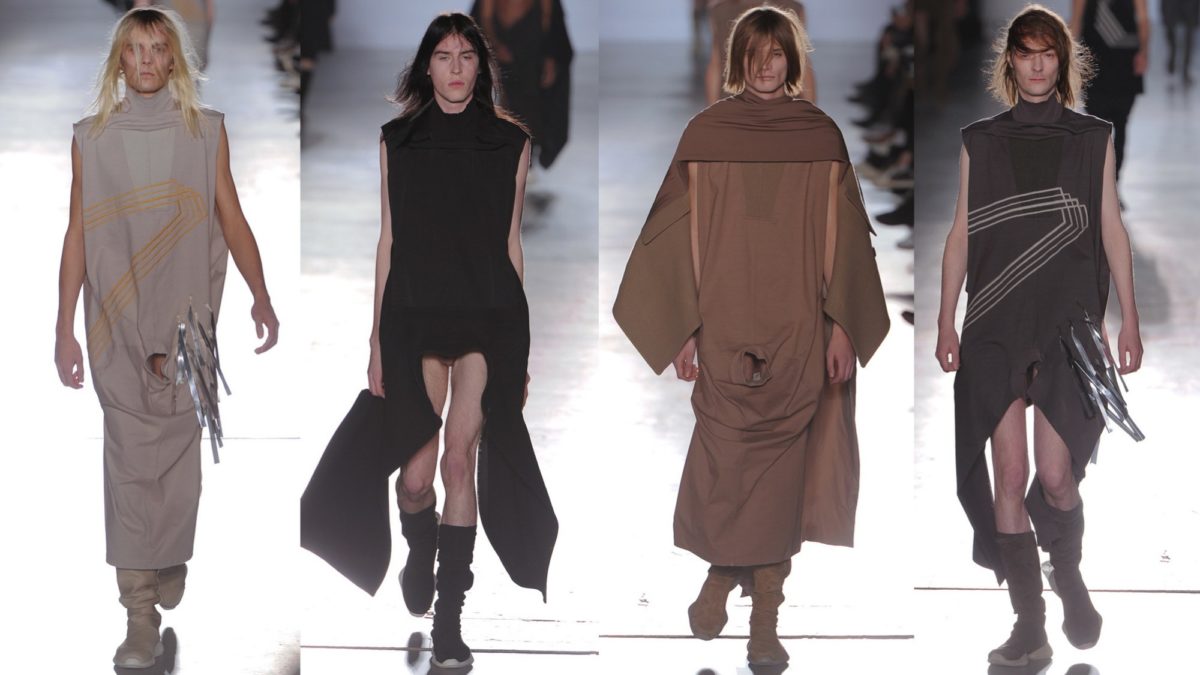
In 2015, the same year as his father’s passing, Owen’s took his collections into some very dark territory exploring his interest into “sociology and anthropology”. His Autumn/Winter 2015 collection which highlighted male genitalia was a shock for audiences, especially for front row members. However, he managed to pull it off as a “tastefully” thought-out approach; dressing models in over-sized peephole garments that gave only flashes of what was beneath. Contextually, it goes back to Owen’s own observation of the human desire to procreate, as a means of defying death and what impact that could have on over population. Clearly more message than ready to wear, but a masterstroke in brand building, receiving the kind of attention one would expect from the intended provocation.

This was also not an isolated event; in the Palais Royal boutique Owens had installed a nude anatomical copy of himself for window shoppers, albeit covered up this was by no means a measure of modesty, with inspections welcome to anyone game enough to unlock the mystery of Owens physicality. Owen also posed for Britain’s’ I-D magazine in a debase double image of the designer urinating into his own mouth, as if to say he is both the aggressor and the submissive participant of the fashion establishment. Splitting his identity in an effort to undercut conservatism and convention.
These anti-fashion antics stems from Owens belief, that his shows are a tribute to a type of humanity, which is why he has always cast specific real people for shows, not beautiful by conventional standards but in possession of a story of self-confidence and attitude, like Owens has crafted for himself.
In line with this value Owens created a rather speechless moment for his Spring/ Summer 2016 show. In speaking fondly of this show in particular, Owens wrote about how he had created the collection whilst pondering the way women nurture another weight during pregnancy.
“Women raising women, women becoming women, and women supporting women.”
Perhaps it is his love of woman and the observation of their strength that his made his women’s line in particular so ground breaking and revolutionary. Owens gives new meaning to functionality through his minimalist aesthetic, providing a freedom of movement with the empowerment of a more masculine style.
Owen’s wanted his brand to reflect his holistic design aesthetic. Owenscorp is ever-evolving, classic and contemporary and present in every diffusion line, including a children’s collection and furniture line that he founded in 2007. His environment, the objects and their surroundings form an extension of his clothes allowing him to stretch his design prowess. Beyond outfitting his studio and shops to reflect his vision of what he calls “broken idealism”, Owen’s next natural step was to venture into product design bringing an influence of cubism and raw animal materials to well thought out pieces.
Consequently, his critically acclaimed furniture became the subject of a 2016 exhibition curated by LA’s own Museum of Contemporary Art. The exhibition installed by Lamy, spans their classical collection with a heavy injection of new works conceived for a recently opened New York boutique in SOHO. Owens often credits Lamy with the execution of his ideas. In an interview with WWD Owens explained their process as “an intimate exercise, A conversation between me and Michele”. The exhibition like the furniture line is a passion project with the advantage of adding greater dimension to what Owens’ himself refers to as “his Planet”.
The closest we have come to stepping onto this planet was the 2017 retrospective Subhuman Inhuman Superman. The self-curated exhibition held at the Triennale di Milano, is for Owens, like putting on any one of his four seasoned shows; and yet it is a culmination of his experience and self-invention that has spanned his 23 years in fashion. The exhibit will feature Owens furniture and fashion contribution including a line up from his recent collections Mastudon and Walrus which move from thoughts of man facing prehistoric extinction to an about face of optimism with his Glitter collection. Owens reminisces over this conundrum telling WWD, that he loves “being able to manipulate a space and create a Utopian vision. I’m completely aware of the poignancy of reaching for something that is unattainable. That is the beauty of of Utopias. It’s only a matter of time before they’re corrupted”.
It is not lost on Owens that he actively corrupts his own vision. His clothing and furniture stand like classical figures in a temple cast in the shadow of a 330-foot-long black globular. This eclipse according to the New York Times, made up of an amalgamation of man-made and natural materials (including the designers’ own hair) represents the Trojan horse Owens proclaimed nearly twenty years ago, to “lay a black glittering turd on the white landscape of conformity”. If we were to ascertain its success, we might as well ask the question Owens posed with one of his infamous brand books: “L’ai-je Bien Descendu?” French for “How well did I descend?”
In the eyes of the Council of Fashion Designers of America, that seems an inapt point. In 2017 the CFDA honoured Owens yet again with the prodigious Lifetime of Achievement award and to mark the occasion, Lamy presented the award at the suggestion of Owens. Ever gracious, for Owens this was an opportunity to acknowledge the impact and contribution of Lamy on his own success and happiness.
Based on this foundation the Rick Owens label continues to strengthen and grow whilst the man himself is further developing as a designer. Having refused several offers to sell out a part, or all of his company, this renegade chooses instead to reign supreme over his vision. Having created a brand that draws on the nature of identity and in particular, it’s power to impact change, it seems in many ways his self-invention has been his greatest creation. For the fashion world anyway, this is for certain.
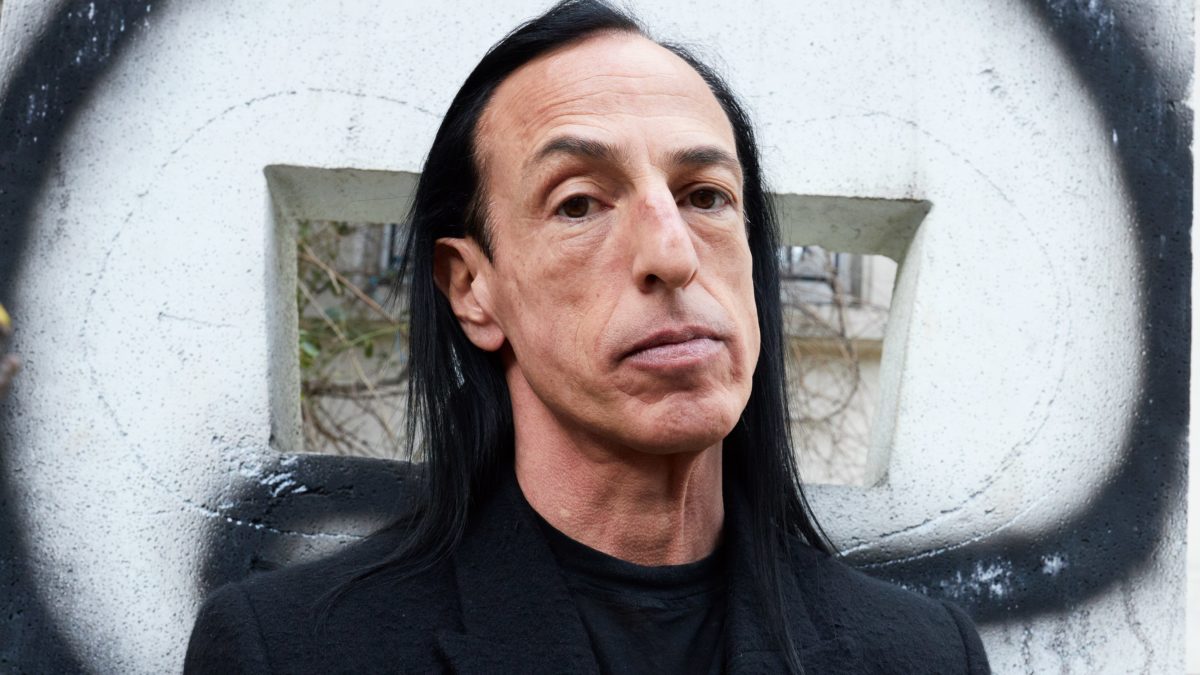
Check back every Tuesday for the latest teaser for FIB and Style Planet TV’s newest docuseries, Renegades.
Written by: Charlie O’Brien
Edited by: Jess Bregenhoj

